Introduction
This thesis titled ‘Unions at Batam Kota: constructing new subjectivities and subverting power configuration’ is based on the critical political backdrop in Indonesia in the recent year. The project is a trade union complex located strategically at the political centre of Batam. It hopes to elevate the position of trade unions in Batam by positioning them intentionally and making them more visible in this workers-dominated city. Thus, it is a space that facilitates not only the collaborative running and management of the trade unions but also public engagement and discourse.
Purpose
Political architecture is a much-discussed subject. While some advocate the idea of ‘smooth spaces’ which aim to create consensus, others point out the importance of avant-gardism in political architectures as a basis for critical architectures. Some also mentioned how critical art and cultural practices can be effectively politicised through agnostic manipulations of public spaces. However, my project takes on a differentiated approach by examining alternative ways in which artistic designs can contribute to unsettling the dominant hegemony. It aims to find a middle ground between the idea of agonistic and collaborative spaces by looking at how design can be generated by its occupants instead of imposing designers’ position.
“PUBLIC SPACE ARE ALWAYS STRIATED AND HEGEMONICALLY STRUCTURED.” – Chantal Mouffe
Site Context
The site location of the political centre, which in Batam’s case is also the Alun-Alun area, is a deliberate move aimed to highlight the significance of trade unions in this young and liberal city. Alun-Alun is a huge empty area which traditionally sits infront of the palaces. It is a common space in ancient Indonesian cities, used widely by the kingdom to establish power over the people. However, Alun-Alun today are more versatile and are used for many more recreational purposes. The Alun-Alun in Batam is one of those new-concept Alun-Alun used for leisure activities. But it is at the same time surrounded by government authorities’ buildings. The main two are the Batam city government and BP Batam which is the trade authority for the free trade zone.
Design Process
This project focuses on trade union politics through an examination of union movements and developments in Batam. It explores the dimension in which spaces can be designed politically while providing an occupiable space for its users. The design process begins with an analysis of the current state-union relationship, programmatic functions of the unions and the site context of Alun-Alun Batam Centre. The design is based on the complicated relationship between the state and the workers – a collaborative yet contested one. The form is generated inside-out; it centres around the programmatic functions of the unions by finding overlapping and separate spaces. A 3-dimensional diagram was used to extract commonalities among different identities. These spaces are then developed via different approaches, translating them into either voids or solids.
In my research, three unions were identified as the most active and main union organisations in Batam. The trade union complex is thus aimed to provide individual spaces for these three trade unions, But with certain degree of interconnections as well as public engagement on different levels. However, the essential idea has always been finding the common or joining space across organisations. Connections or linked spaces across the 3 union blocks are the essential parts in this project.
Conclusion
the final design is a self-informed building where the involvement of organisations, union members and the public are both individually taken care of and collectively considered. Most importantly, the idea of this political space is not to be an avant-garde critic of politics but to acknowledge the inherent political dimension in the context which might inconspicuously challenge the existing hegemony.
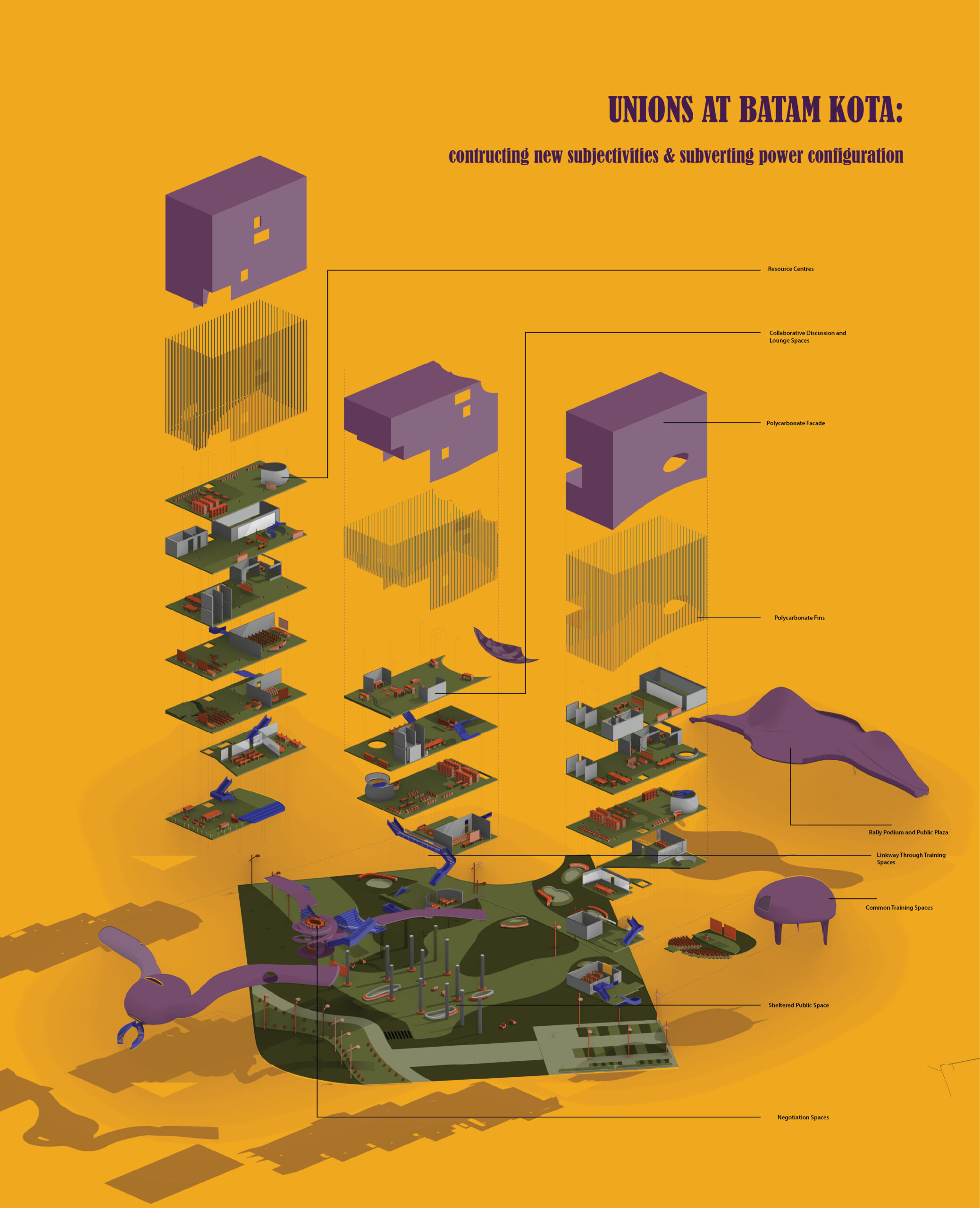
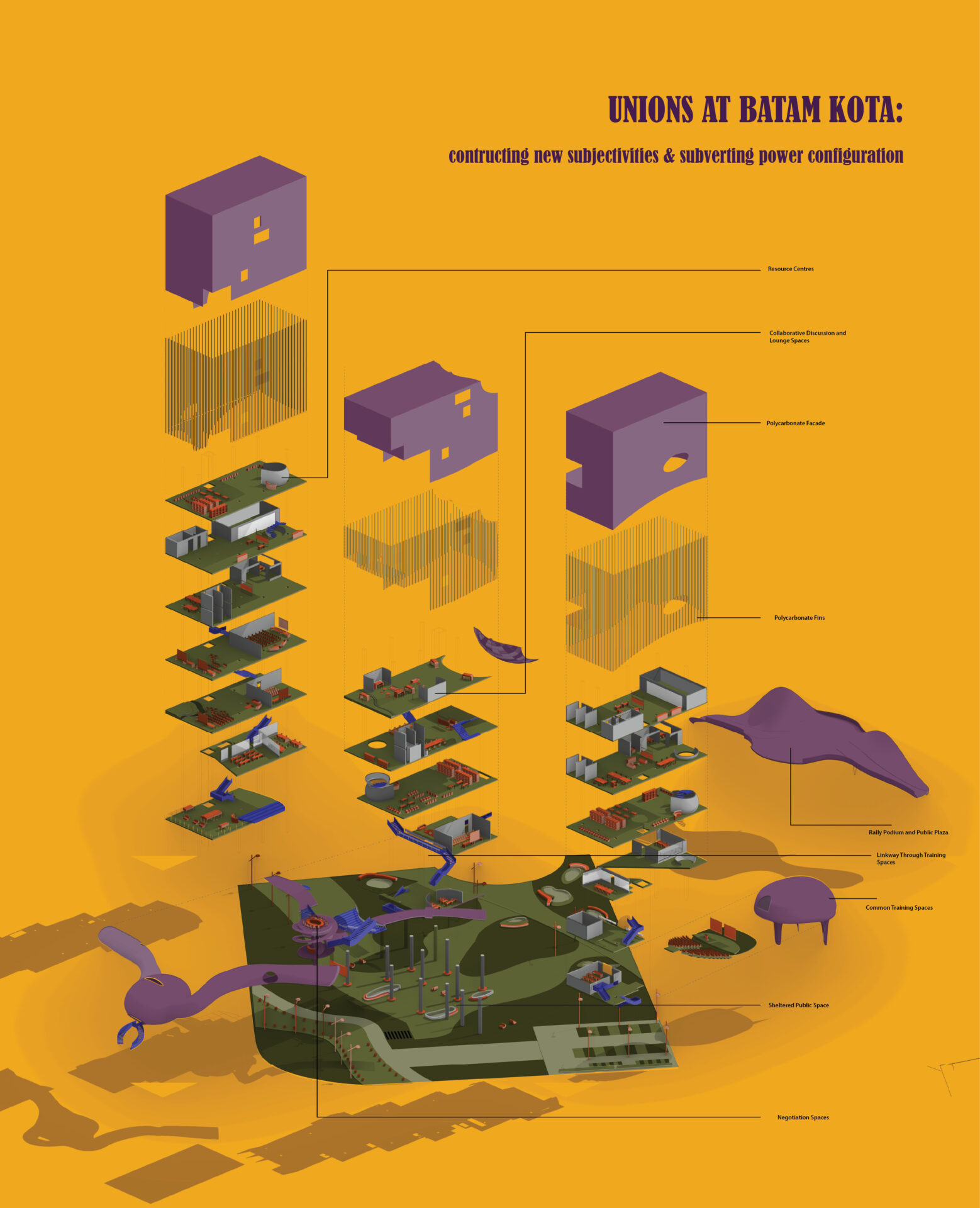
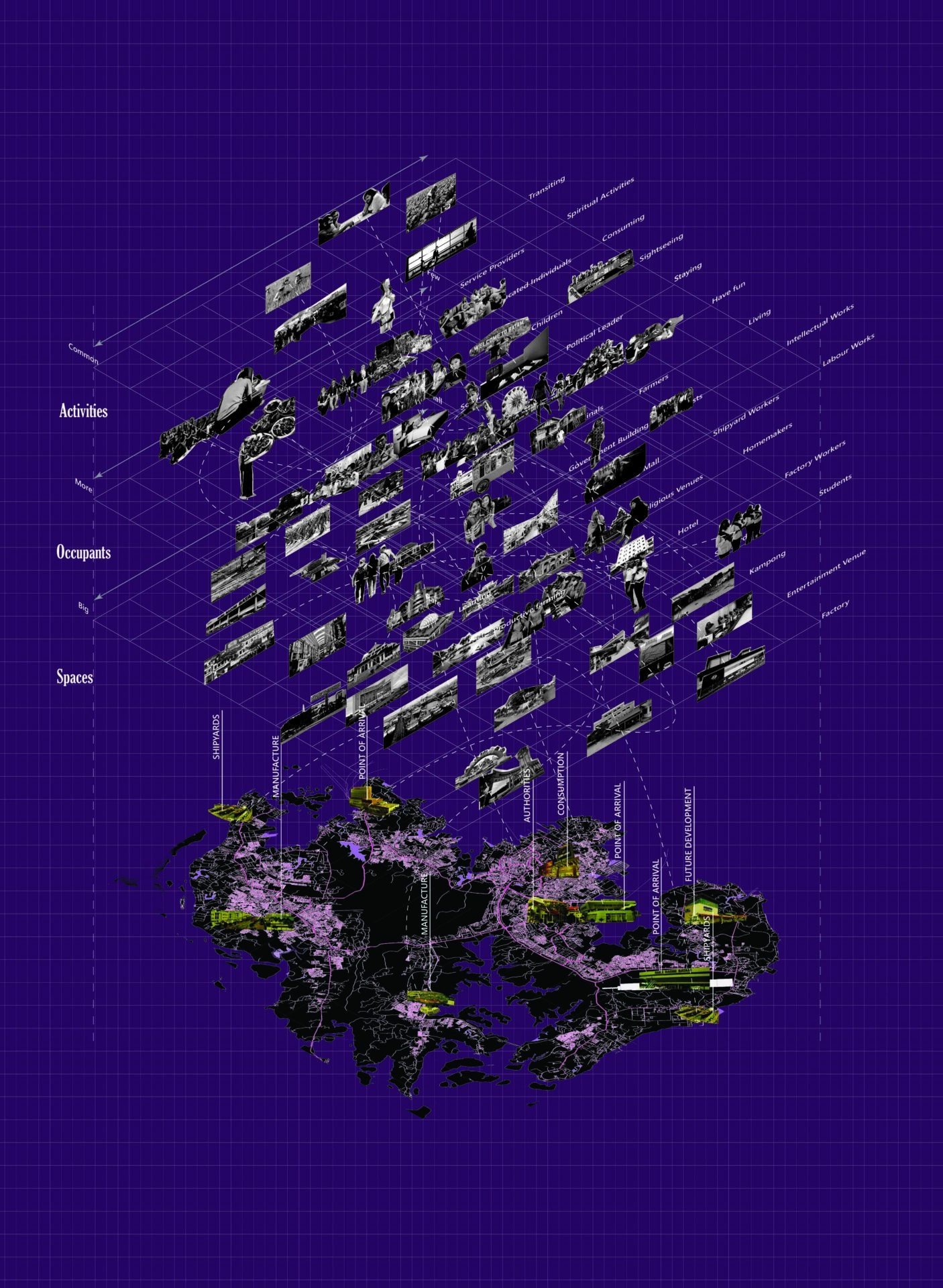
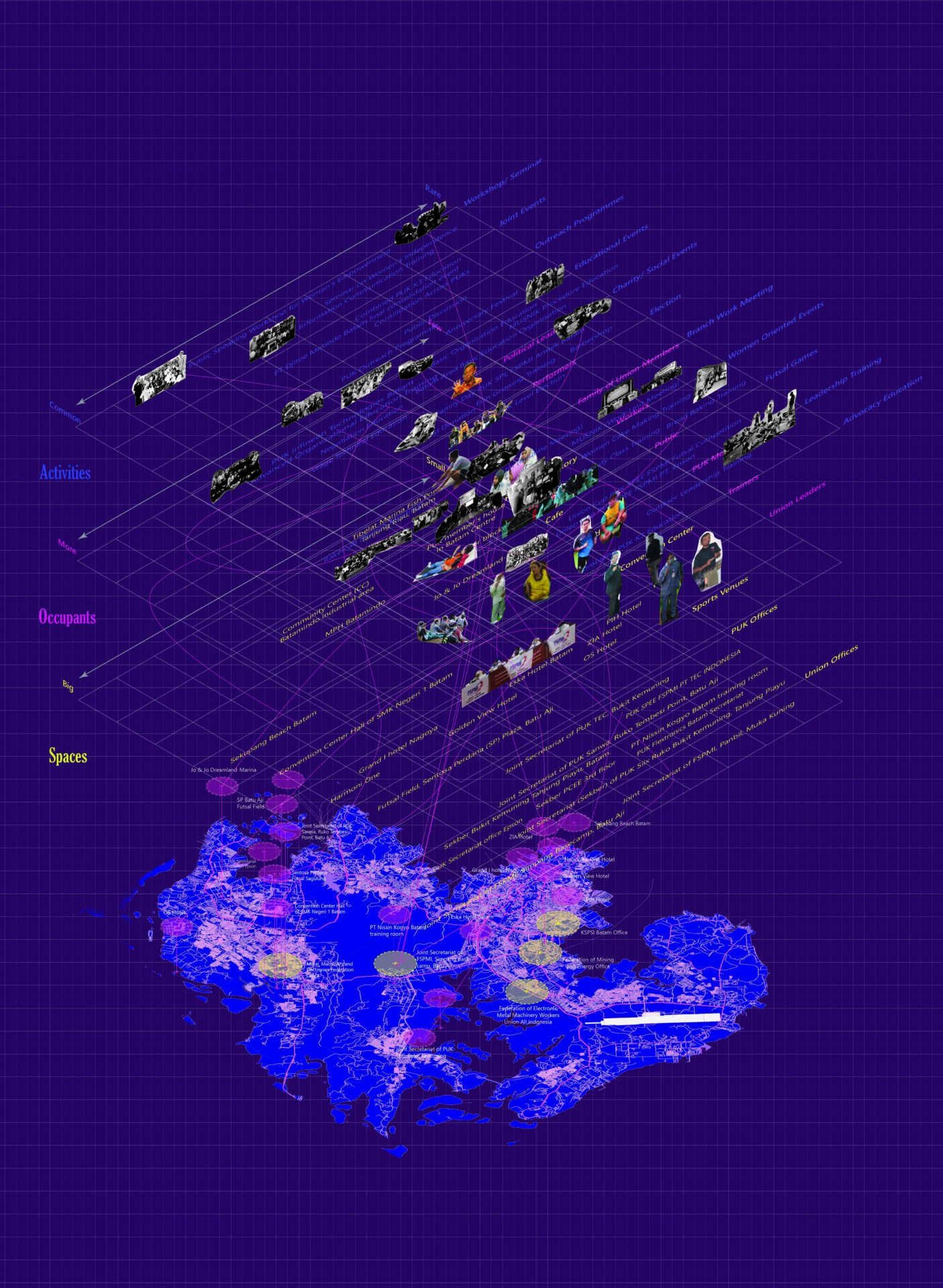
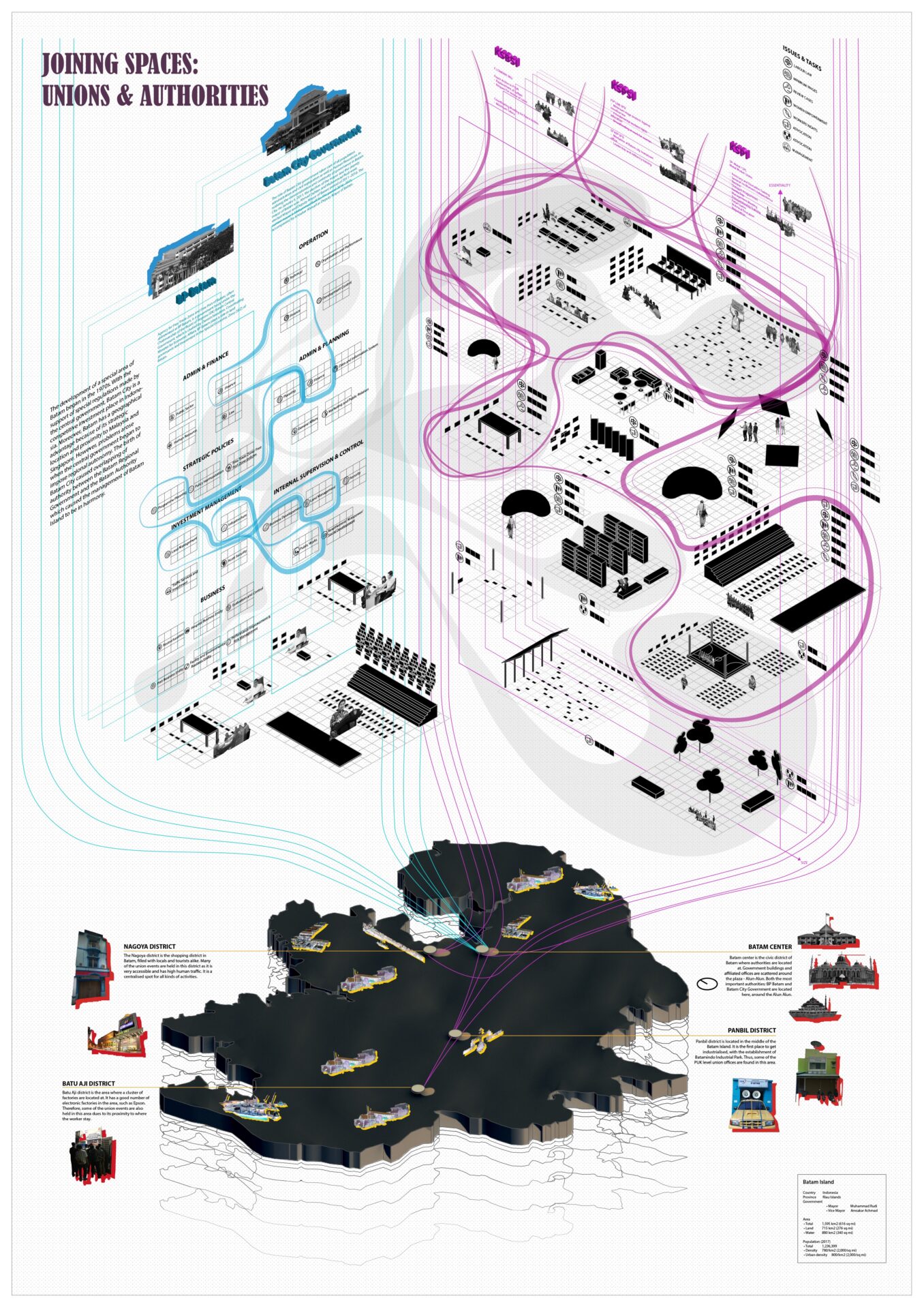
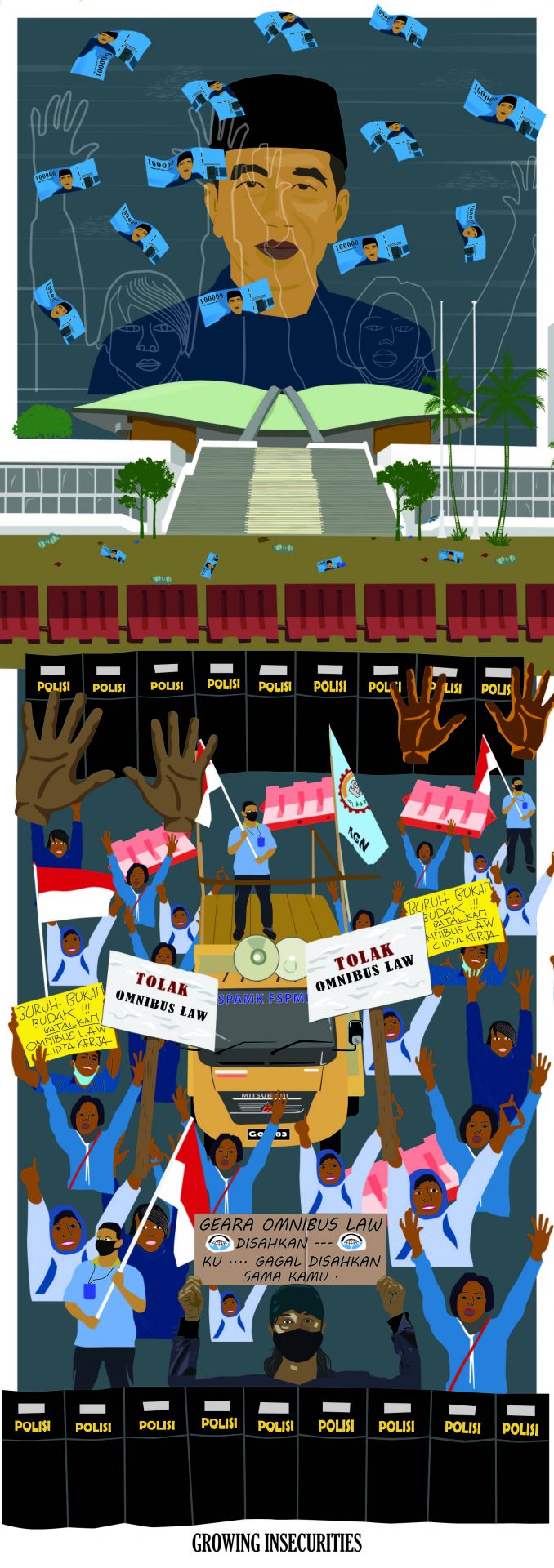
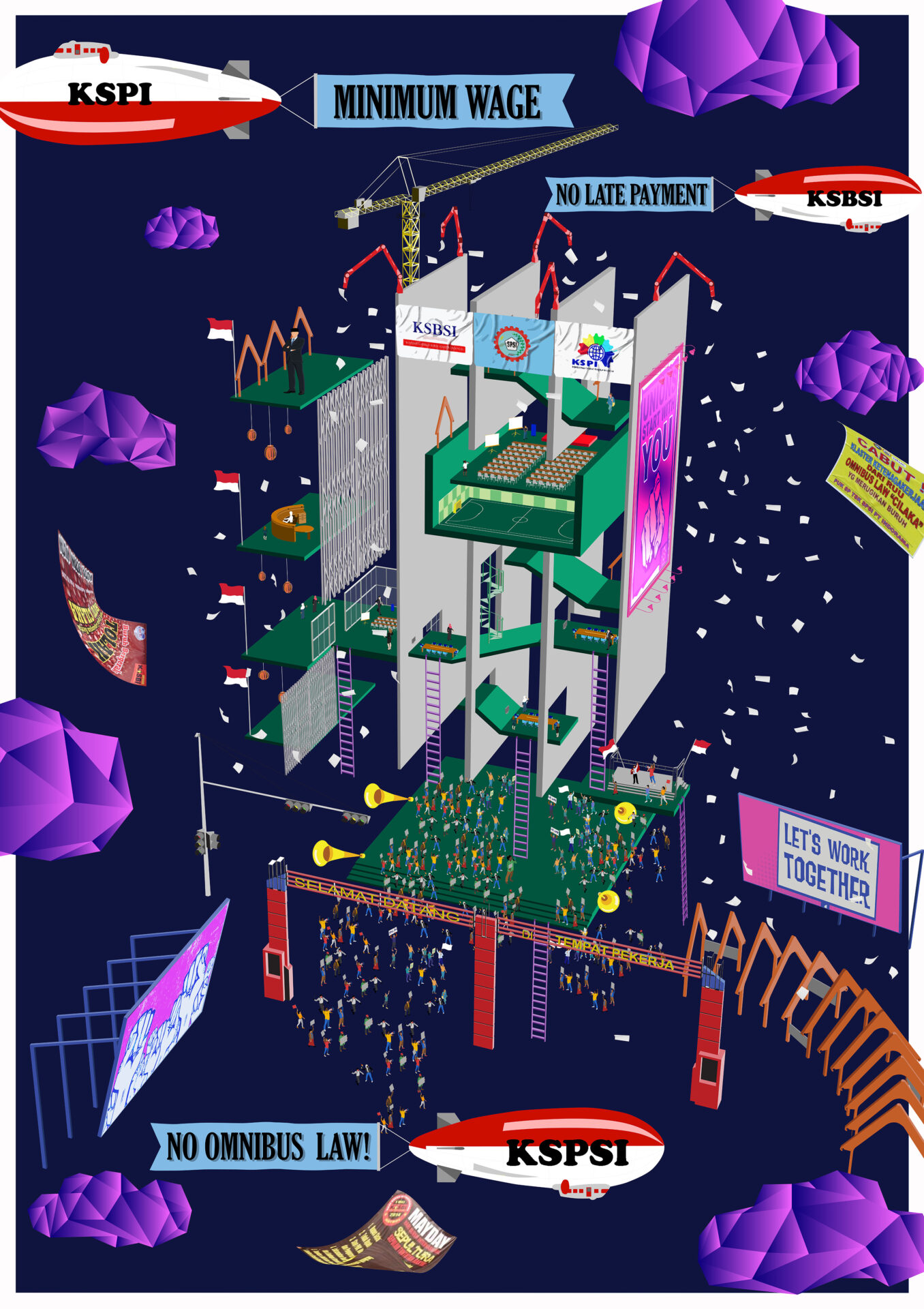
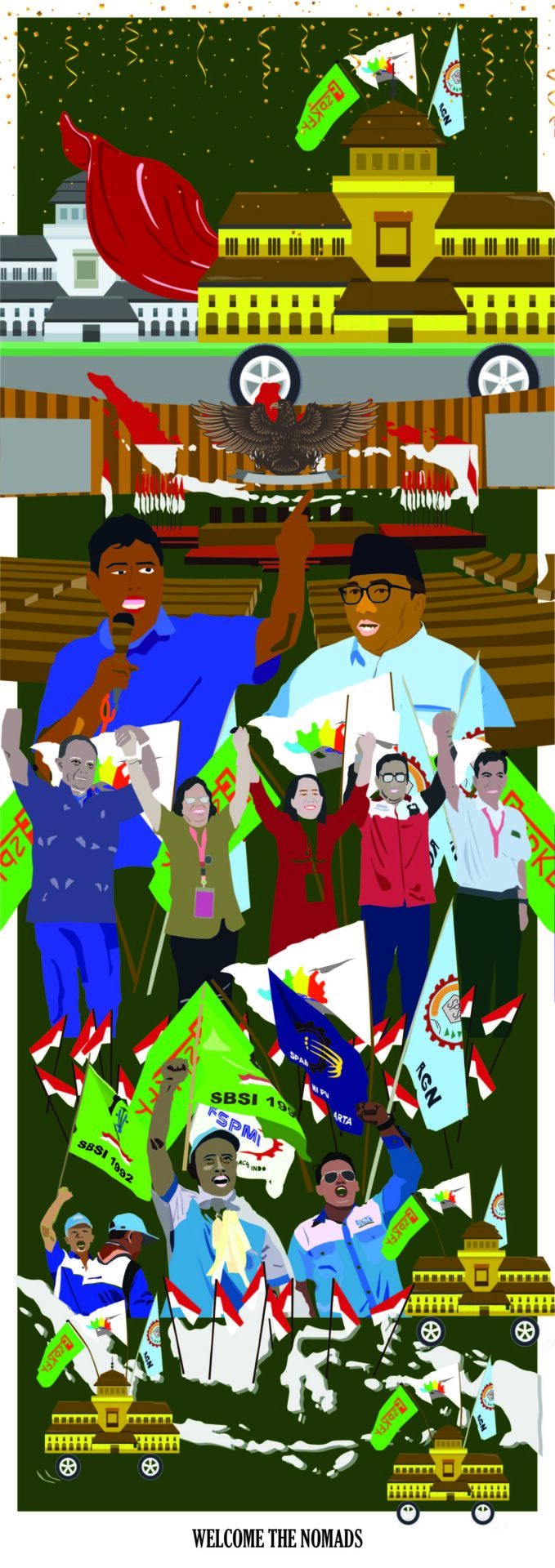
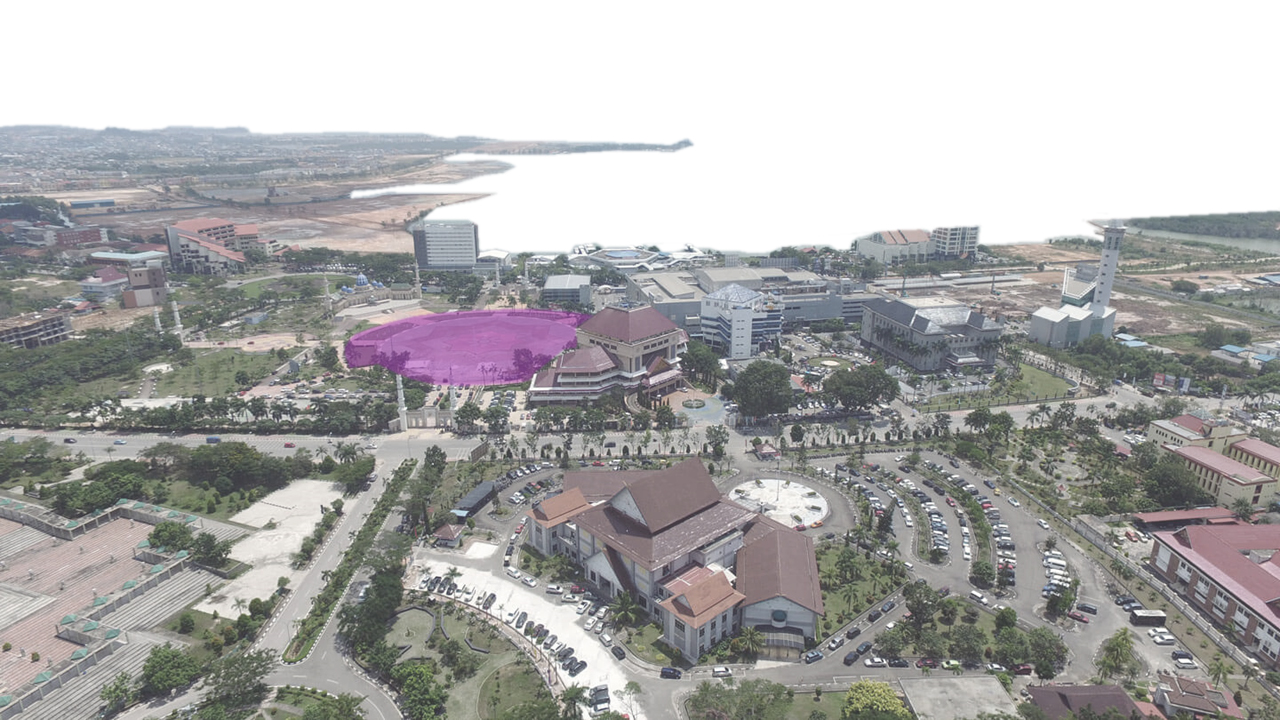
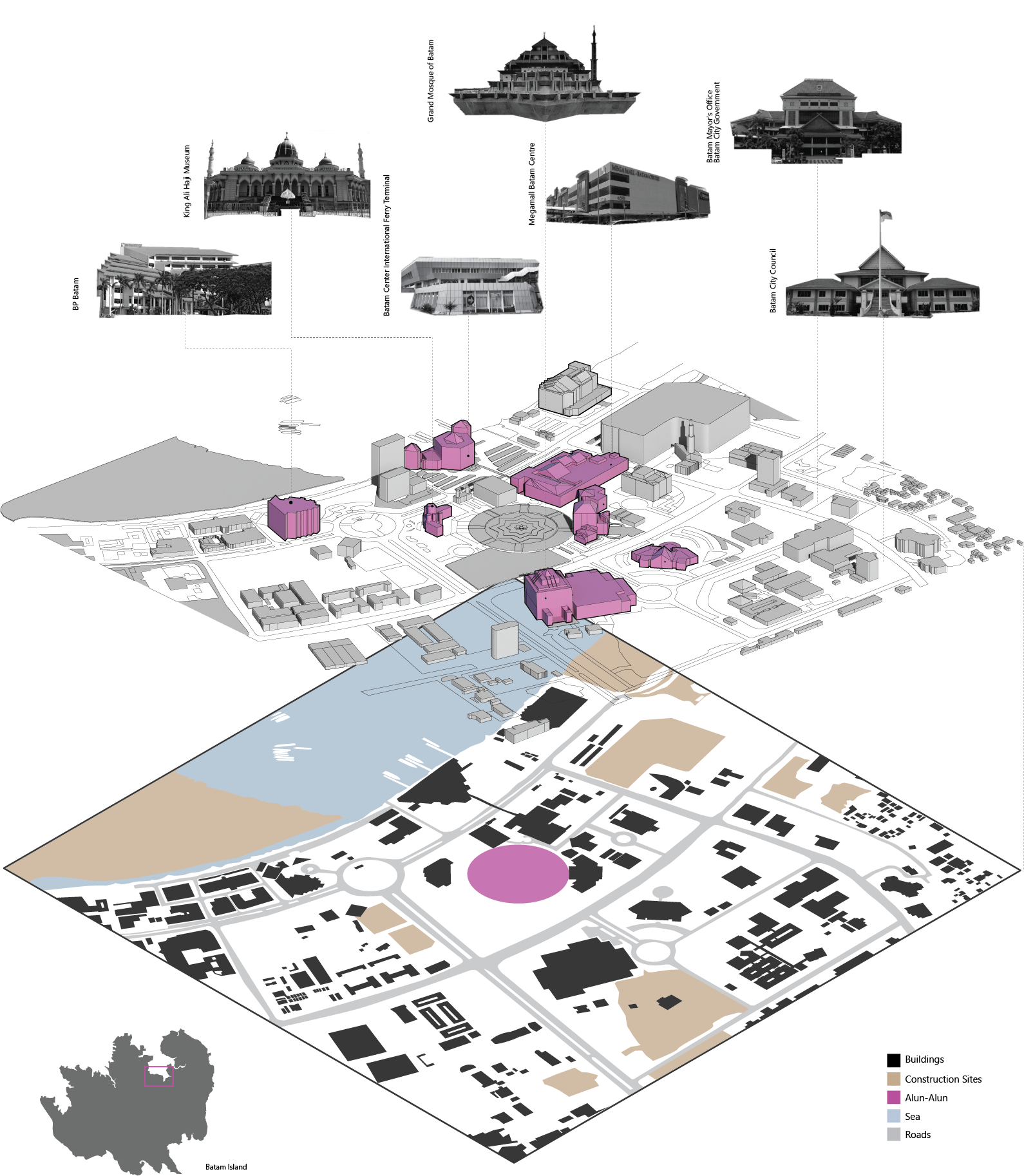
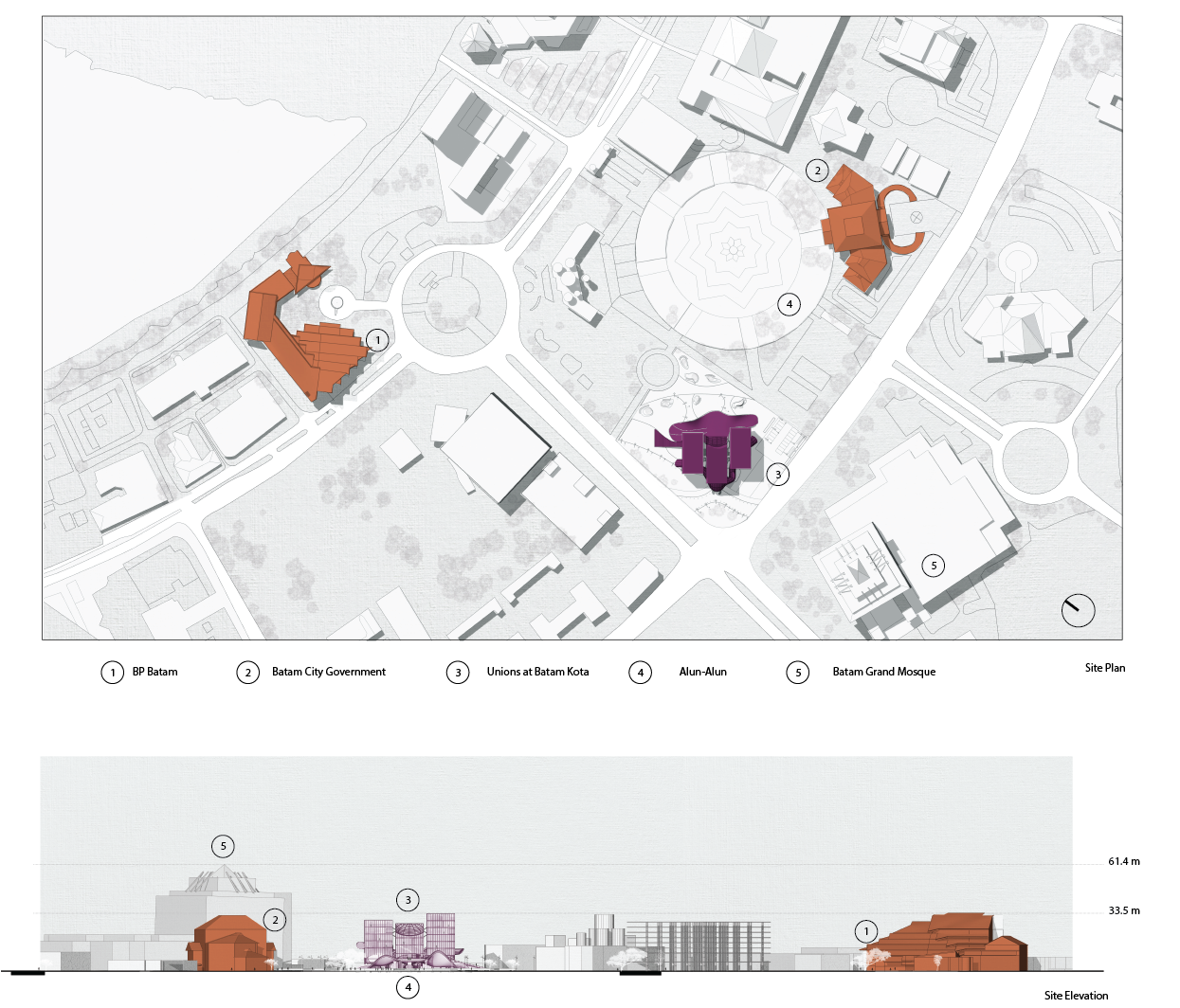
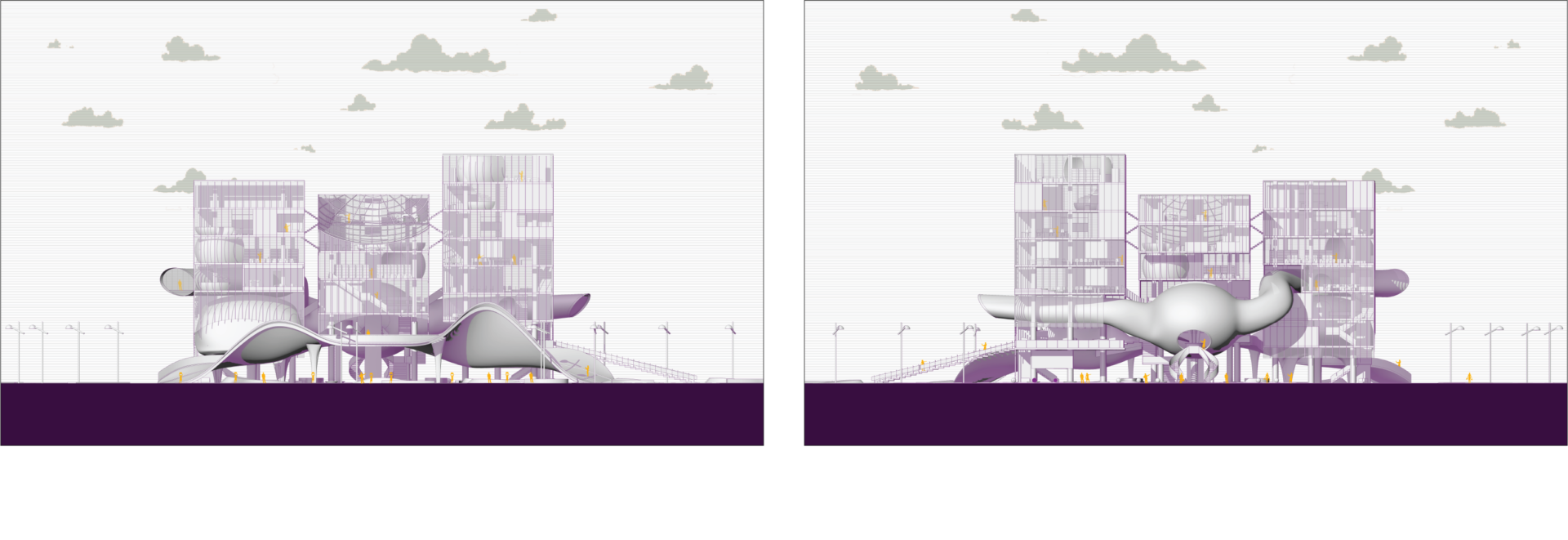
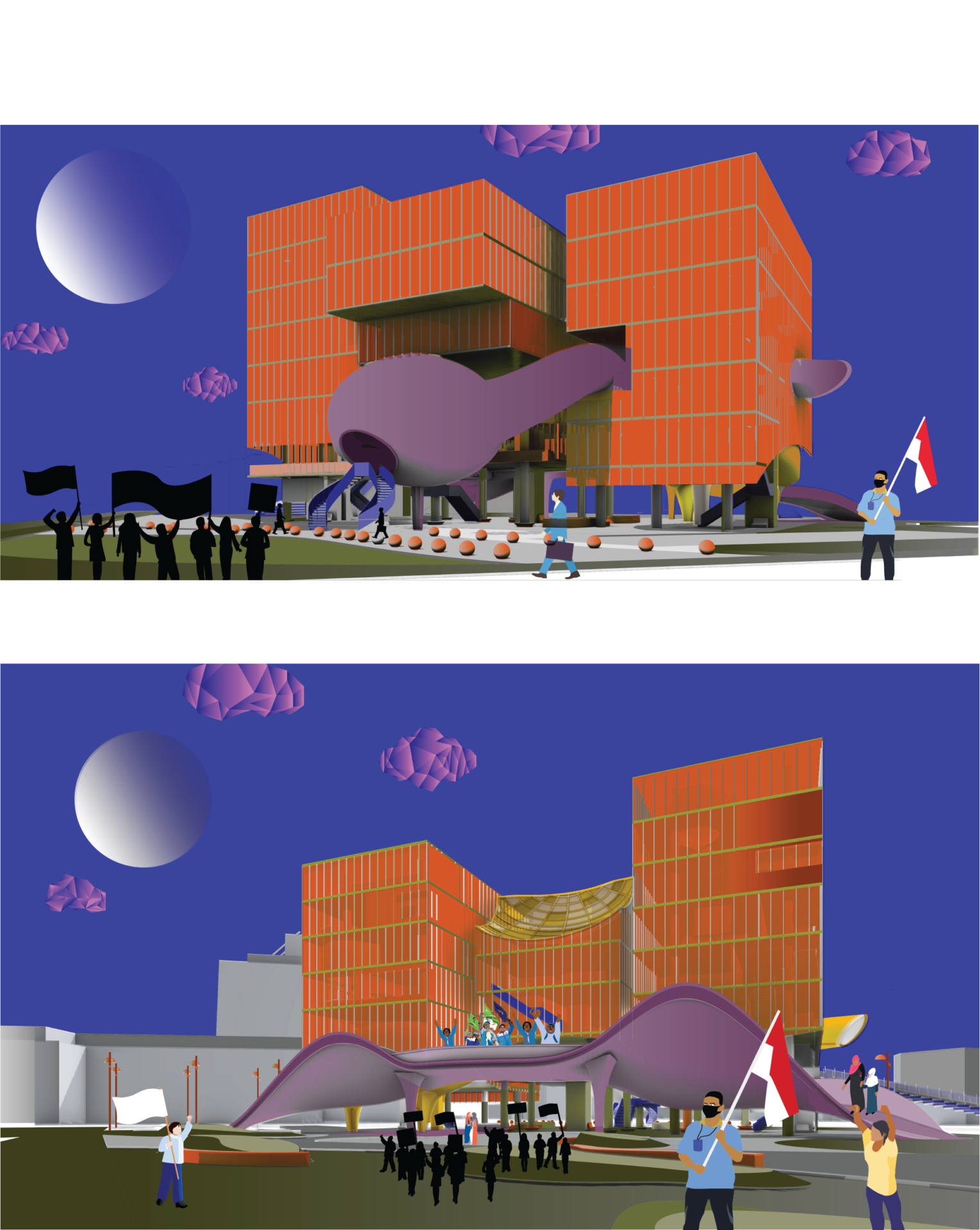

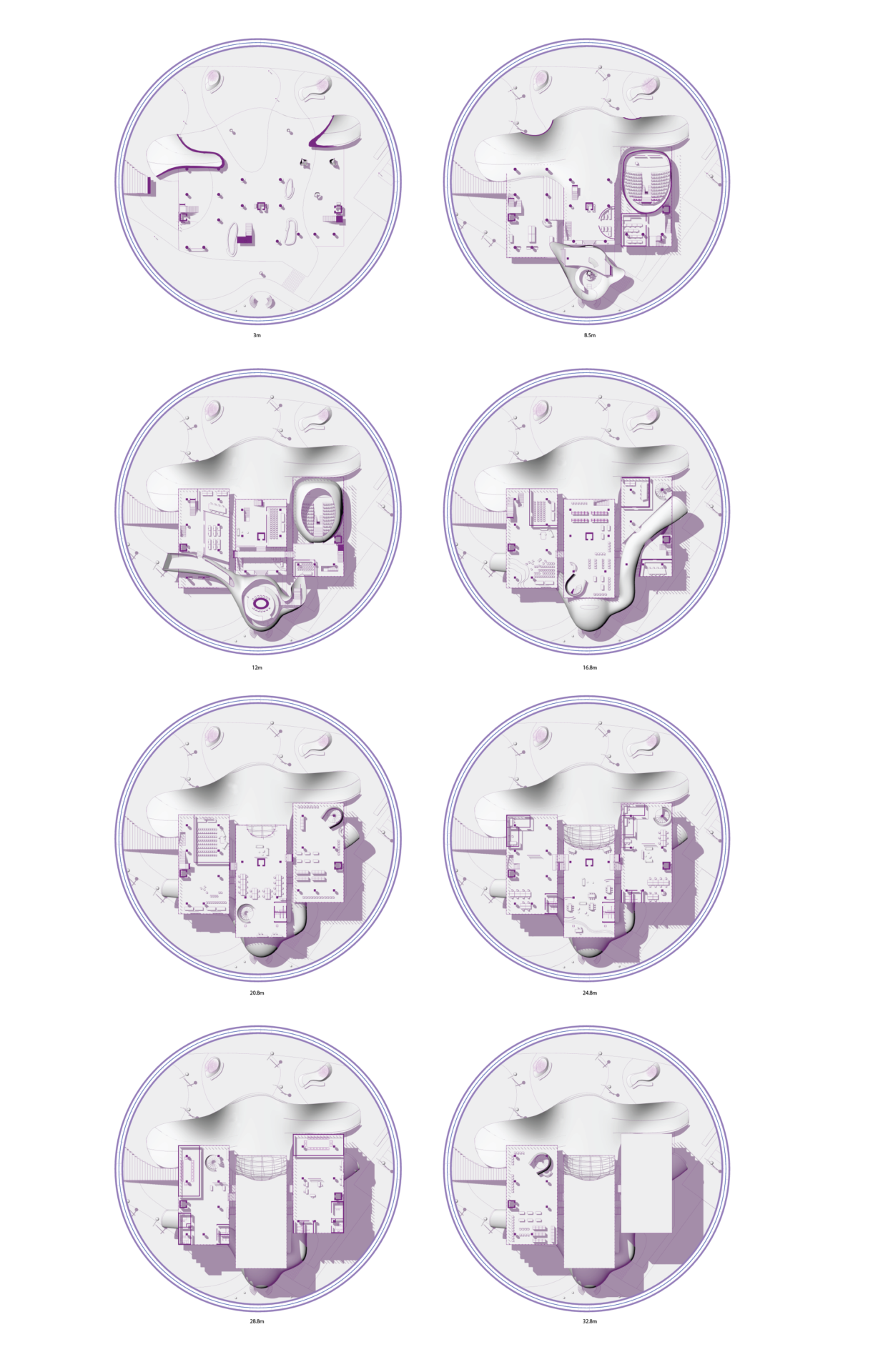
Supervisor's comments:
-